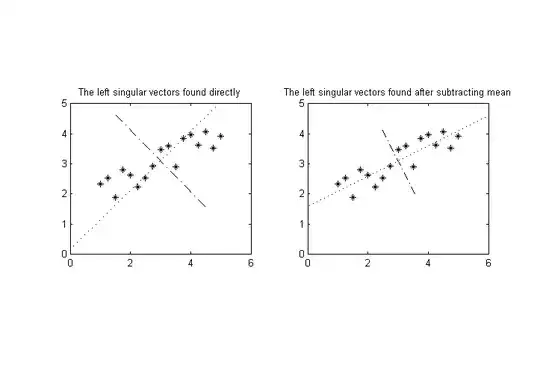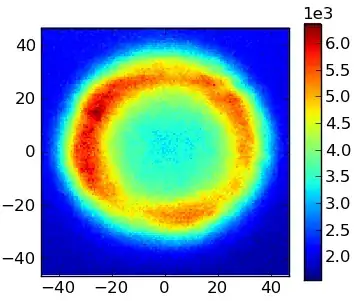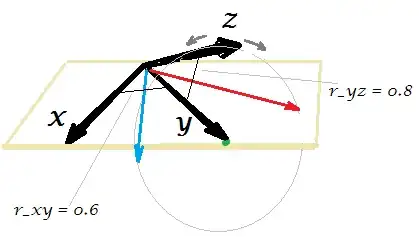For some purpose, I need to generate random numbers (data) from "sloped uniform" distribution. The "slope" of this distribution may vary in some reasonable interval, and then my distribution should change from uniform to triangular based on the slope. Here is my derivation:
Let's make it simple and generate data form $0$ to $B$ (blue, red is uniform distribution). To obtain the probability density function of blue line I need just the equation of that line. Thus:
$$f(x) = tg(\varphi)x + Y(0)$$
and since (picture):
\begin{align} tg(\varphi) &= \frac{1/B - Y(0)}{B/2} \\[5pt] Y(0) &= \frac{1}{B} - tg(\varphi)\frac{B}{2} \end{align}
We have that:
$$f(x) = tg(\varphi)x + \left(\frac{1}{B} - tg(\varphi)\frac{B}{2} \right)$$
Since $f(x)$ is PDF, CDF equals:
$$F(x) = \frac{tg(\varphi)x^2}{2} + x\left(\frac{1}{B} - tg(\varphi)\frac{B}{2} \right)$$
Now let's make a data generator. The idea is, that if I'll fix $\varphi, B$, random numbers $x$ can be computed if I'll get numbers from $(0,1)$ from an uniform distribution as described here. Thus, if I need 100 random numbers from my distribution with fixed $\varphi, B$, then for any $t_i$ from uniform distribution $(0,1)$ there is $x_i$ from "sloped distribution", and $x$ can be computed as:
$$\frac{tg(\varphi)x_i^2}{2} + x_i\left(\frac{1}{B} - tg(\varphi)\frac{B}{2} \right) - t_i = 0$$
From this theory I made code in Python which looks like:
import numpy as np
import math
import random
def tan_choice():
x = random.uniform(-math.pi/3, math.pi/3)
tan = math.tan(x)
return tan
def rand_shape_unif(N, B, tg_fi):
res = []
n = 0
while N > n:
c = random.uniform(0,1)
a = tg_fi/2
b = 1/B - (tg_fi*B)/2
quadratic = np.poly1d([a,b,-c])
rots = quadratic.roots
rot = rots[(rots.imag == 0) & (rots.real >= 0) & (rots.real <= B)].real
rot = float(rot)
res.append(rot)
n += 1
return res
def rand_numb(N_, B_):
tan_ = tan_choice()
res = rand_shape_unif(N_, B_, tan_)
return res
But the numbers generated from rand_numb are very close to zero or to B (Which I set as 25). There is no variance, when I generate 100 numbers, all of them are close to 25 or all are close to zero. In one run:
num = rand_numb(100, 25)
numb
Out[140]:
[0.1063241766836174,
0.011086243095907753,
0.05690217839063588,
0.08551031241199764,
0.03411227661295121,
0.10927087752739746,
0.1173334720516189,
0.14160616846114774,
0.020124543145515768,
0.10794924067959207]
So there must be something very wrong in my code. Can anyone help me with my derivation or code? I'm crazy about this now, I can't see any mistake. I suppose R code will give me similar results.


